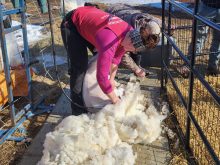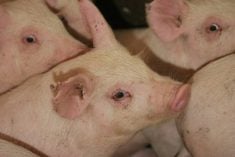Quebec’s organic livestock farmers are having a tough time making ends meet, a problem that doesn’t appear to extend to the Prairies.
A study conducted by the Union of Organic Meat Producers of Quebec shows lamb and beef producers are barely covering their costs.
According to a translated summary of the study that ran in The Canadian Organic Grower, an average sheep farm with 177 lambs generated profits of about $3,000.
An average 50-head beef operation that grows its own soybeans for feed generated $5,000 in profit in 2005 based on beef prices of $2.50 per pound and veal prices of $3.44 per lb. Farms without soybean production were unprofitable.
Read Also

Charges laid after cattle theft
Saskatchewan RCMP lay two charges against a man after six cattle went missing.
Analysts say the study speaks to the need for higher organic meat prices to cover the costs associated with raising organic lamb and beef.
Dayton Funk, director of Saskatchewan Organic Livestock, a nonprofit co-operative that promotes organic meat, said the producers he knows don’t share the experience of their eastern colleagues.
“In Saskatchewan it’s very profitable compared to Quebec.”
Funk estimates Saskatchewan organic growers receive a $125 per head profit premium over their conventional counterparts when producing 500 and 800 lb. calves. The premium is more than $200 for a finished steer, despite paying 30 to 40 percent more for organic feed grain.
An average Saskatchewan organic feeder calf operation would generate profits of $190 to $225 per head, or about twice as much as the average Quebec cattle farmer, who generated $106.51 per animal in 2005.
Funk said the difference in profitability boils down to the higher cost of production in Quebec.
“I guess you have to look at what’s the cost of their dirt. That is a factor. Their land values are probably double what our land values are,” he said.
Quebec farmers are also likely paying more for their feed because they face stiff competition from the province’s sizable organic dairy sector.
“We do have a very cheap source of organic feed grain in this province.”
It adds up to a prairie industry brimming with promise. Funk estimates there are 3,000 to 5,000 certified organic cattle in the province, which could easily double within the next three years.
“As long as demand grows with production, we’ll be well on our way.”

















